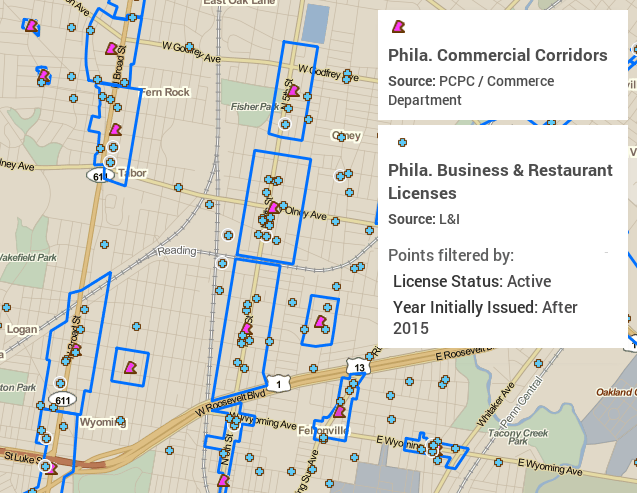When Data Is Shared Between Government Departments

Cities are full of institutions and resources, governmental and private, that serve communities. Schools, hospitals, grocery stores, libraries, job training centers, swimming pools, housing projects, and transit centers, just to name a few. By knowing where these assets are, governments can identify underserved neighborhoods, and encourage development where appropriate resources exist.
Of course, cities have most of the information they need to site projects already. But different departments often work in their own silos, duplicating work and not taking advantage of ways they can work together. There’s tremendous value in having a single resource where anyone from any department can look up this sort of information.
The City of Philadelphia
In order to save time and ensure smooth cross-departmental coordination, the City of Philadelphia used a PolicyMap enterprise license to provide data from a variety of departments to the city’s employees.
With this information at hand, they could make strategic decisions driven by the work of other departments. Not only did they need to map assets from each others’ departments, but they also needed to access underlying data about the people in those communities (such as through Census data).
The City’s Counseling and Foreclosure Diversion program could use the platform to see how their own projects (like low interest loans and loan renegotiations) impacted areas with high foreclosure rates.
Planners could quickly bring up locations of Repair and Modification projects and compare them to the Office of Property Assessment’s data on building conditions, to see if these projects were effectively being carried out in areas where housing stock is below average.
Corridor Managers in the Department of Commerce, working to ensure healthy and vibrant commercial districts, could look at new restaurant and business licenses issued by the Department of Licenses and Inspections.
The map below shows commercial corridors as blue outlines, along with business and restaurant licenses issued in the past few years as points. An economic development analyst assessing key retail corridors could click on the points and see what kinds of businesses recently opened. If a given corridor had too many new gas station and garages, that could be flagged, and steps could be taken to encourage development of stores and restaurants to balance out the commercial mix.
They loaded their PolicyMap license with data from a wide variety of agencies:
| Department of Commerce City Planning Commission Community Life Improvement Program Energy Coordinating Agency Licenses and Inspections Office of Transportation and Utilities Office of Housing and Community Development Office of Child Development and Early Learning Office of Property Assessment Parks and Recreation |
Philadelphia Housing Development Corporation Pennsylvania Horticultural Society Office of Innovation and Technology Redevelopment Authority Water Department Industrial Development Corporation Philadelphia Police Department Department of Public Health Department of Revenue Streets Department |
With project information from such varied departments, plans could be made with information that always existed, but wasn’t previously easily available.
This post was adapted from our recent white paper, “Sharing Insights, Saving Time: New Data Tools for Government.” You can download the complete paper here.
Photo credit: Cédric Boismain
